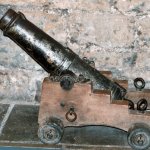




The city was founded by Galli Insubri in ‘400 b.C. In 222 b.C. the Romans won her and named her Mediolanum, at first they made her a colony then they raised her to a Municipium. In 286 b.C Mediolanum was proclaimed by Diocleziano capital of the occidental Roman Empire. During the period of the occidental Roman Empire Milan became, following the proclamation of the Edit of Constantino and most of all thanks to Sant Ambrogo which was named Bishop of the city in 374, an important center of Christianity.
In 569 a.C she was won by the Longobardi at their turn won in 774 a.C. by Carlo Magno.
The free commune well established between the XI and the XIII century was suppressed by Federico Barbarossa which was at his turn defeated by the Lega Lombarda in 1176 during the Legnano battle. Starting from the XIV century till the XVI century started the period delle signorie. The first to dominate Milan were the Bishops with which Gian Galeazzo obtained the title of ducal, followed by the Sforza. To Francesco sforza in 1447 was reconfirmed the title of duce. The successor of Francesco, Ludovic Sforza said Il Moro rained with his wife Beatrice d’Este and gave Milan a period of cultural and artistic evolution. After the Signorie followed the period of the French domination and Habsburg till the end of 1535 when the city was enslaved by the Spanish which governed her till the beginning of the 700 leading her to a state of decline worsened by the pest of 1630 which cut the population.
In 1706 the city was under the Austria tic rain.
The Austrians rained till 1848 a part for a brief napoleon parentheses, and were thrown out definitely with the famous five days of Milan.
The city was damaged a lot by the bombardments of the second world war with the total destruction of many historical monuments. Starting from the middle of the 900 began a strong re starting of the production and economy which rapidly brought the city to the point where it is still now.